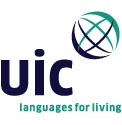Perhaps in response to a package of five Elementary and Secondary Education Act (ESEA) bills introduced on September 15 the Senate Health, Education, Labor and Pensions Committee (HELP) has scheduled a ‘mark up’ of ESEA reauthorization language for Tuesday, October 18. This means the full Committee will meet to offer and vote on amendments and then vote the bill out of Committee.

“The introduction of legislative language will certainly help to direct the discussion of what issues and language should be included in any ESEA reauthorization package and could fuel discussion during the Oct. HELP Committee‘mark up’. We expect our legislators to support the bill that will improve current status of physical education and health education. I want to mention that most New York City public schools administrators have very positive perceptions of physical education. Research paper ‘Principals’ Physical Education Perception in New York City Public Schools’ (Howard Z. Zeng, Brooklyn College) published in the Supplement to Research Quarterly for Exercise and Sport (March 2011) reflects that principals truly view physical education as an academic discipline. They also agree that without PE, our students will not be fully developed. Parents’ perceptions of physical education are positive as well. According to a 2002 study by the National Association for Sport and Physical Education (NASPE), 84% of parents had a positive perception of physical education in general, and 81% of parents believed that daily PE should be mandatory. Additionally, research has shown that 79.3% of parents revealed that their child’s physical education grade was as important as grades earned in academics (James, Griffin and France, 2005),†said Srecko Mavrek, President of Exercise Science/Sports Medicine Section of the New York State Association for Health, Physical Education, Recreation and Dance (NYS AHPERD).
Many New York State PE and health professionals have contacted their federal legislators – to work to finalize the language. In their letters to Senators Kirsten Gillibrand and Charles E. Schumer, they urge them to support the inclusion of physical education and health education as ‘core academic subjects’ during the ESEA reauthorization process. A copy of the letter was sent to the U.S. Congressman Jose E. Serrano. This important recognition would have a significant impact on students’ educational outcomes and help them to develop healthy and active lifestyles.
Both quality physical education and health education are critical components of educating the whole child, helping students to become health literate, understand the benefits of a physically active lifestyle, model and practice healthful behaviors, and adopt a lifelong commitment to healthy living. According to the Centers for Disease Control and Prevention’s (CDC) 2006 School Health Policies and Programs Study (SHPPS), only 6.4% of elementary schools, 20.6% of middle schools and 35% of high schools required instruction in all 14 essential health topics. In fact, most students receive only about 4 hours per year of health education. At a time when one-third of our nation’s children are overweight or obese, we must take advantage of every strategy to encourage schools to provide quality physical education, which increases physical competence, physical activity participation and health-related fitness. Moreover, a recent CDC recent report provides evidence that physical education and physical activity can help improve academic achievement, including grades and standardized test scores. It also positively affects cognitive skills and behavior, and enhances concentration and memory.
“Accordingly, New York City PE and health professionals strongly urge their federal legislators to support the inclusion of physical education and health education as‘core subjects’ during the ESEA reauthorization process to improve both the health and academic achievement of our nation’s youth,†said Mavrek.
Via EPR Network
More Education press releases







